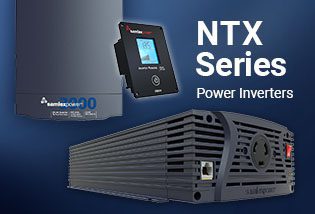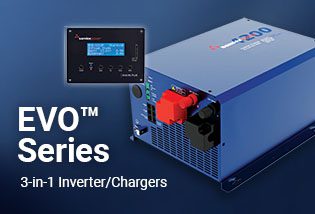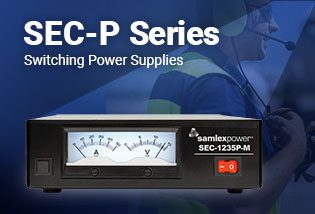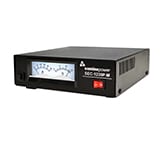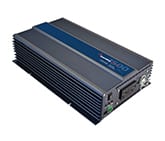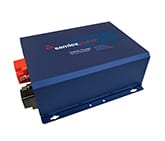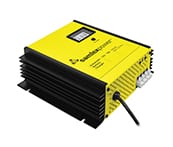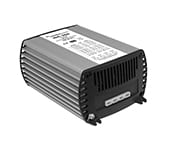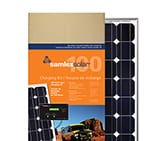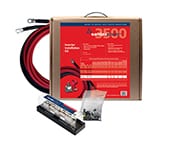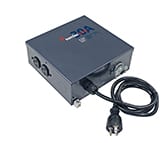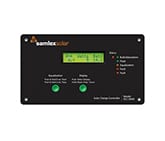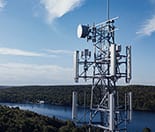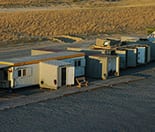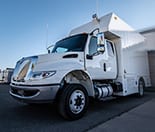Battery Chargers: General Information
How can Lead-acid batteries be characterized?
Lead-acid batteries can be categorized by the type of application:
- automotive service – Starting/Lighting/Ignition (SLI, a.k.a. cranking)
- deep cycle service
What are SLI Batteries?
Everybody is familiar with the SLI batteries that are used for automotive starting and powering vehicular accessories. SLI batteries are designed to produce high power in short bursts but must be constantly recharged (normally with an alternator while driving).
Vehicle starting typically discharges 1%-3% of a healthy SLI battery’s capacity. The automotive SLI battery is not designed for repeated deep discharge where up to 80% of the battery capacity is discharged and then recharged. If an SLI battery is used for this type of application, its useful service life will be drastically reduced
What are Deep Cycle Batteries?
Deep cycle batteries are designed with thick-plate electrodes to serve as primary power sources, to have a constantdischarge rate, to have the capability to be deeply discharged up to 80 % capacity and to repeatedly accept recharging. They are marketed for use in recreation vehicles (RV), boats and electric golf carts so they may be referred to as RV batteries, marine batteries or golf cart batteries. There are two categories of deep cycle lead acid batteries wet and sealed.
A wet cell battery has a high tolerance to overcharging. However, it will release hydrogen gas when charging that must be properly vented and the water level must be checked frequently. Sealed batteries can either be Gel Cell or AGM (Absorbed Glass Mat).
Both the Gel Cell and AGM are maintenance free, have no liquid to spill and gassing is minimal. The Gel Cell is the least affected by temperature extremes, storage at low state of charge and has a low rate of self discharge. An AGM battery will handle overcharging slightly better than the Gel Cell
What are the Units of Battery capacity?
The battery capacity is the measure of the energy the battery can store and deliver to a load. It is determined by how much current any given battery can deliver over a stipulated period of time. The energy rating is expressed in Ampere Hours (AH).
As a bench mark, the battery industry rates batteries at 20 hour rate i.e. how many Amperes of current the battery can deliver for 20 hours at 80º F till the voltage drops to 10.5 Volts for 12 V battery and 21 V for 24 V battery. For example, a 100 AH battery will deliver 5 Amperes for 20 hours.
Battery capacity is also expressed as Reserve Capacity (RC) in minutes. Reserve capacity is the time in minutes for which the battery can deliver 25 Amperes at 80º F till the voltage drops to 10.5 Volts for 12 V battery and 21 V for 24 V battery. Approximate relationship between the two units is as follows:
Capacity in AH = Reserve Capacity in RC minutes x 0.6
What are the Typical sizes of batteries applicable for powering inverters?
Below is a chart of some battery sizes applicable for powering inverters
| BCI * Group | Battery Voltage, V | Battery AH |
| 27 / 31 | 12 | 105 |
| 4D | 12 | 160 |
| 8D | 12 | 225 |
| GC2** | 6 | 220 |
* Battery Council International
** Golf Cart
What is the trend observed in usable battery capacity at higher discharge rates?
As stated above, the rated capacity of the battery in AH is applicable at a discharge rate of 20 Hours. As the discharge rate is increased, the usable capacity reduces due to “Peukert Effect”. This relationship is not linear but is more or less according to the table below:
Table 1: Battery Capacity versus Rate of Discharge
| Hours of Discharge | Usable Capacity |
| 20 | 100% |
| 10 | 87% |
| 8 | 83% |
| 6 | 75% |
| 5 | 70% |
| 3 | 60% |
| 2 | 50% |
| 1 | 40% |
Using the above table will show that a 100 AH capacity battery will deliver 100% (i.e. full 100 AH) capacity if it is slowly discharged over 20 hours at the rate of 5 Amperes. However, if it is discharged at a rate of 50 Amperes then theoretically, it should provide 100 AH· 50 = 2 hours.
However, the Table above shows that for 2 hours discharge rate, the capacity is reduced to 50% i.e. 50 AH. Therefore, at 50 Ampere discharge rate the battery will actually last for 50 AH·50 Amperes = 1 Hour
What is the relationship between Depth of discharge and battery life?
The more deeply a battery is discharged on each cycle, the shorter the battery life. Using more batteries than the minimum required will result in longer life for the battery bank. A typical cycle life chart is given at Table 2 below:
Table 2: Typical Cycle Life Chart
| Depth of Discharge % of AH Capacity |
Cycle Life Group 27/31 |
Cycle Life Group 8D |
Cycle Life Group GC2 |
| 10 | 1000 | 1500 | 3800 |
| 50 | 320 | 480 | 1100 |
| 80 | 200 | 300 | 675 |
| 100 | 150 | 225 | 550 |
It is recommended that the depth of discharge should be limited to 50%.
What happens to battery capacity at low temperatures?
Batteries lose capacity in low temperatures. At 32F, a battery will deliver about 70 to 80% of its rated capacity at 80F. If the air temperature near the battery bank is lower than 80F, additional batteries will be needed to provide the same usable capacity. For very cold climates, an insulated / heated battery compartment is recommended.
How can two or more batteries be connected in Series? What is the total capacity of the system?
When two or more batteries are connected in series, their voltages add up but their AH capacity remains the same. For example, when two 12 V, 105 AH batteries are connected in series, it becomes a 24 V, 105 AH battery. (Positive of the first battery is the positive terminal of the series connection.
The negative of the first battery is connected to the positive of the second battery. The negative of the second battery is the negative of the series connection)
How can two or more batteries be connected in Parallel? What is the capacity of the system?
When two or more batteries are connected in parallel, their voltages remain the same but their capacities add up. For example, if two 12 V, 105 AH batteries are connected in parallel, their voltage remains 12 V but their capacity becomes 105 — 2 = 210 AH (Connect the positive terminal of the first battery to the positive terminal of the second battery.
These paralleled common positive terminals become the positive terminal of the parallel combination. Connect the negative terminal of the first battery to the negative terminal of the second battery. These paralleled common negative terminals becomes the negative terminal of the parallel combination)
How should the inverter battery bank be sized?
One of the most frequently asked question is, “how long will the batteries last?’. This question cannot be answered without knowing the size of the battery system and the load on the inverter. Usually this question is turned around to ask “How long do you want your load to run?”, and then specific calculation can be done to determine the proper battery bank size.
There are a few basic formulae and estimation rules that are used
Formula 1 – Power in Watts (W) = Voltage in Volts (V) x Current in Amperes (A)
Formula 2 – For an inverter running from a 12 V battery system, the DC current required from the 12 V batteries is the AC power delivered by the inverter to the load in Watts (W) divided by 10
For an inverter running from a 24 V battery system, the D.C. current required from the 24 V battery is equal to the A.C. power delivered by the inverter to the load in Watts (W) divided by 20
Formula 3 – Energy required from the battery = DC current to be delivered (A) x time in Hours (H)
The first step is to estimate the total AC watts (W) of load(s) and for how long the load(s) will operate in hours (H). The AC watts are normally indicated in the electrical nameplate for each appliance or equipment. In case AC watts (W) are not indicated, formula 1 given above may be used to calculate the AC watts by multiplying 120 VAC by the AC current in Amperes . The next step is to derive the DC current in Amperes (A) from the AC watts as per formulae 2 above. An example of this calculation for 12 V inverter is given below.
Let us say that the total AC Watts delivered by the inverter = 1000 W
Then, using formula 2 above, the DC current to be delivered by the 12 V batteries = 1000 W ·10 = 100 Amperes
Next, the energy required by the load in Ampere Hours (AH) is determined. For example, if the load is to operate for 3 hours then as per Formula 3 above:
Energy to be delivered by the 12 V batteries = 100 Amperes — 3 Hours = 300 Ampere Hours (AH)
Now, the capacity of the batteries is determined based on the run time and the usable capacity. From Table 1 above, the usable capacity at 3 Hour discharge rate is 60%. Hence, the actual capacity of the 12 V batteries to deliver 300 AH will be equal to 300 AH · 0.6 = 500 AH
And finally, the actual desired rated capacity of the batteries is determined based on the fact that normally only 80% of the capacity will be available with respect to the rated capacity due to non availability of ideal and optimum operating and charging conditions. So the final requirements will be equal to:
500 AH ÷0.8 = 625 AH (note that the actual energy required by the load was 300 AH)
It will be seen from the above that the final rated capacity of the batteries is almost 2 times the energy required by the load in AH
Thus, as a thumb rule, the AH capacity of the batteries should be twice the energy required by the load in AH
For the above example, the 12 V batteries may be selected as follows:
-
- Use 6 Group 27/31, 12 V, 105 AH batteries in parallel to make up 630 AH, or
- Use 3 Group 8D, 12 V, 225 AH batteries in parallel to make up 675 AH
How can batteries be charged?
The batteries can be charged by using good quality AC powered battery charger or from alternative energy sources like solar panels, wind or hydro systems. Make sure an appropriate battery charge controller is used. It is recommended that the batteries may be charged at 10% to 13 % of the Ampere Hour capacity (20 hour discharge rate).
Also, for complete charging (return of 100 % capacity ), it is recommended that a 3 stage charger may be used (Constant current bulk charging followed by constant voltage boost / absorption charging followed by constant voltage float charging ).
What kind of Batteries should be used to power inverters in vehicles/RVs?
It is recommended that for powering the inverter, one or more auxiliary deep cycle batteries should be used that are separate from the SLI batteries. The inverter should be powered from the deep cycle batteries.
How should the Batteries be charged in vehicles / RVs?
For charging the SLI and the auxiliary deep cycle batteries, the output from the alternator should be fed to these two sets of batteries through a battery isolator of appropriate capacity. The battery isolator is a device that will allow the alternator to charge the two sets of batteries when the engine is running.
The isolator will allow the inverter to be operated from the auxiliary batteries and also prevent the SLI batteries from charging the auxiliary deep cycle batteries when the engine is not running. Battery isolators are available from auto / RV / marine parts suppliers.
What if the available alternator in the vehicle / RV is not adequate?
When in use, the alternators heat up and their output current capacity can drop by up to 25%. When heated up, their charging voltage may also not reach the desired absorption voltage and will result in return of only about 80% of the battery capacity.
In case the current output of the standard alternator is not adequate to charge the two sets of batteries rapidly and fully to 100% of their capacity, use heavy duty alternator that can produce higher current and voltage required to charge multiple battery systems. These alternators are available with auto / RV parts suppliers.
Can two or more battery chargers be connected in series/parallel?
No. Our battery chargers are not designed to be connected in series/parallel.


